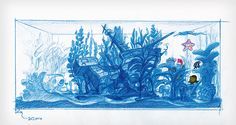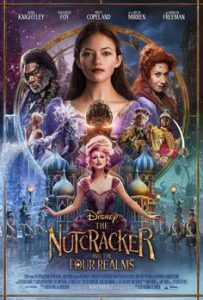
The Art of Animation: Exploring the Magic Behind Animated Movies
Animated movies have captivated audiences of all ages for decades. From classics like Disney’s “Snow White and the Seven Dwarfs” to modern masterpieces like Pixar’s “Toy Story,” these films are known for their stunning visuals and captivating storytelling. But have you ever wondered about the magic that goes on behind the scenes? In this article, we will take a closer look at the art of animation and explore the techniques that bring these movies to life.
1. Animation Principles
Animation is the art of bringing static drawings to life through movement. It relies on a set of principles that animators follow to create the illusion of motion. These principles include:
Squash and Stretch: This principle gives a sense of weight and flexibility to animated characters. It involves distorting objects or characters to exaggerate their movements.
Timing: Timing is crucial in animation, as it determines the speed at which characters move. Fast timing can create a sense of urgency, while slow timing can convey a feeling of calmness.
Appeal: An animated character must be visually appealing to the audience. This principle focuses on creating characters with unique designs and expressions that make them memorable.
2. Traditional Animation
In the early days of animation, movies were created using traditional hand-drawn techniques. Animators would sketch each frame of the animation on paper, then trace the drawings onto transparent sheets called cels. These cels were then painted and photographed in sequence to create the illusion of movement.
While traditional animation is time-consuming, it allows for great artistic control and attention to detail. Many beloved animated films, such as Disney’s “The Little Mermaid” and “Beauty and the Beast,” were created using this method.
3. Computer Animation
With the advent of computers, animation took a giant leap forward. Computer animation, also known as CGI (computer-generated imagery), allows animators to create lifelike characters and environments in a virtual world.
Using specialized software, animators model and manipulate three-dimensional objects, assign them textures and colors, and then animate them. This process significantly reduces the time and effort required for animation, enabling studios to produce movies more efficiently.
4. Stop-Motion Animation
While traditional and computer animation dominate the industry, there is another unique form of animation: stop-motion. In stop-motion animation, physical objects are captured frame by frame, with slight movements made between each shot.
This painstaking process requires meticulous attention to detail, as artists create miniature sets and carefully position puppets or objects for every frame. Popular stop-motion films include “Coraline” and “Wallace and Gromit.”
5. Motion Capture
Motion capture is another technique widely used in modern animated movies. It involves recording the movements of real actors and using that data to animate digital characters. This technique adds a level of realism and nuance to animated performances.
Using special markers placed on the actor’s body, motion capture cameras track their movements. The data collected is then transferred to computer software where it is applied to the digital character, creating a lifelike animation.
Conclusion
The art of animation is a fascinating blend of creativity, technology, and storytelling. From the early hand-drawn animations to the cutting-edge CGI of today, animated movies continue to push the boundaries of what is possible. Whether you’re watching a classic Disney film or a modern Pixar masterpiece, take a moment to appreciate the behind-the-scenes magic that brings these characters to life.

